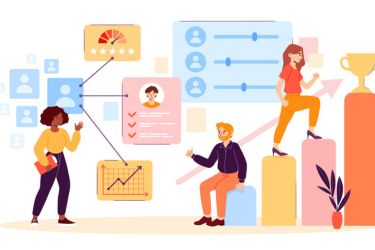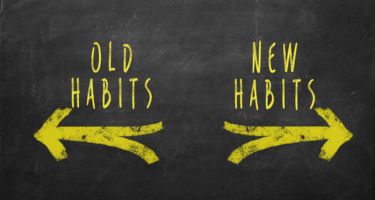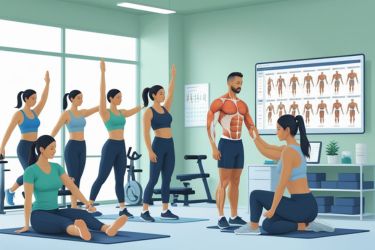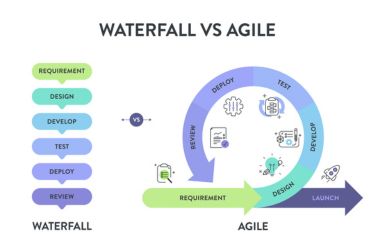Losing a job to AI can feel overwhelming, but it does not mean the end of our career paths. The practical next step is to learn how to work alongside AI, using it as a tool to find new opportunities and develop new skills. Rather than resisting change, we need to focus on adapting and growing with the technology shaping the workplace.

Many people who have faced AI-driven job loss have successfully rebuilt their careers by upskilling or reskilling. Tools that match our skills to emerging job markets and training to work with AI are becoming essential. This shift shows that while some jobs disappear, new roles emerge that require a different set of knowledge.
The future of work will look different, but it remains full of possibility. Our response to AI replacing jobs will determine how well we navigate this change and find new purpose in the evolving job market.
Key Takeaways
- Adapting to AI is crucial for finding new job opportunities.
- Upskilling helps us meet the demands of evolving work roles.
- Using AI as a tool can speed up career transitions and growth.
Understanding The Impact Of AI On Employment
AI is changing the way work gets done, shifting both the types of tasks we handle and the jobs themselves. Some roles face deep changes due to automation, while others adapt with new tools like generative AI. Industry views vary on how this will play out in the near future.
Distinguishing Between Job Loss And Task Automation
It’s important to separate full job loss from task automation. AI often automates specific repetitive tasks within jobs, not entire roles. For example, data entry or simple calculations can be done faster by AI, but workers still manage complex decisions.
This means some roles will shrink or change shape instead of disappearing completely. Workers may spend less time on routine tasks and more on creative or strategic work. Upskilling becomes key as we learn to work alongside AI tools rather than compete with them.
Roles Most At Risk In 2025
Jobs involving routine, manual, or predictable tasks face the highest risk in 2025. This includes roles like assembly line workers, basic clerical jobs, and some entry-level customer service positions.
In contrast, jobs requiring social interaction, complex problem-solving, or creativity are less vulnerable. Professions in healthcare, education, and advanced technology tend to need human judgement AI can’t easily replace.
Here’s a quick list of roles at risk:
- Data entry clerks
- Telemarketers
- Basic manufacturing workers
- Simple accounting roles
The Rise Of Generative AI And AGI
Generative AI, like ChatGPT, can produce original text, images, and code, making it a powerful tool across many industries. It helps us create content, analyse data, and automate customer responses. This increases productivity but also reshapes job responsibilities.
Artificial General Intelligence (AGI) is a more advanced concept where AI can perform any intellectual task a human can. While AGI remains a future goal, leaders like Dario Amodei of Anthropic warn we must prepare for its impact carefully, balancing innovation with ethical concerns.
Perspectives From Industry Leaders
Industry leaders acknowledge AI’s potential and risks. Dario Amodei highlights the need for responsible development of AI to avoid unintended job displacement.
Other experts note that while AI may reduce certain jobs, it creates new roles in AI management, maintenance, and ethics. There is broad agreement on the importance of training workers to adapt to this new landscape rather than fearing full job loss.
Many companies now invest in workshops and micro-credentials to help employees build AI skills, ensuring a smoother transition in changing job markets.
Immediate Steps After Job Loss To AI
Losing a job because of AI can be both unexpected and challenging. Our first actions shape how quickly we adapt. It is essential to handle our feelings, review our existing skills, and explore where those skills can take us next.
Processing The Change
When AI takes over a role, the change feels sudden and can be hard to accept. We need to allow ourselves time to process these emotions. Feelings such as frustration or uncertainty are normal, but dwelling on them too long can hold us back.
Talking to others who have faced similar experiences can provide support and insight. It’s important to focus on what we can control—like learning new tools or thinking about future steps—rather than blaming technology. AI may replace tasks demanding high efficiency and accuracy, but it also opens doors to new roles that complement these advances.
Assessing Transferable Skills
After acknowledging the change, we should identify our transferable skills. Skills like problem-solving, communication, and even knowledge of the software or systems we used are valuable, especially if we improve them with AI tools.
We can list skills that helped us work efficiently and accurately before. Many of these skills remain useful, even if the job has changed. For example, experience with data entry or customer service can shift to roles that require similar attention to detail but include using AI as a tool.
Creating a clear inventory of our skills helps us see which careers might be a good fit. This also guides us in deciding what new skills to learn or refresh.
Identifying New Career Opportunities
Finding a new career means looking beyond our past roles. Some opportunities may involve working alongside AI rather than competing with it. Jobs in AI management, data analysis, or technical support often demand both human insight and tech knowledge.
We can research industries adopting AI, such as healthcare, education, or logistics. These sectors need employees who understand how to use AI to increase accuracy and efficiency. Upskilling through courses or certifications focused on AI-related tools boosts our chances of getting hired.
Creating a plan with clear goals and timelines will keep us on track. Networking and using AI-powered job-matching services can connect us with the right opportunities faster.
Leveraging AI To Accelerate Career Transition
We can use AI to make the career change process faster and more effective. It shapes how we write applications, find suitable jobs, and build our professional profiles online. By focusing on these specific actions, we improve our chances to land new roles in a competitive market.
Using Generative AI For Job Applications
Generative AI helps us create better job applications by drafting tailored cover letters, CVs, and responses to common interview questions. It can learn from job descriptions and highlight relevant skills and experiences. This reduces the time we spend on writing while improving the quality of our applications.
We can also use these tools to simulate interviews or get feedback on answers. This prepares us for actual conversations with employers. Plus, generative AI can suggest keywords to include, increasing our chances of getting past automated screening systems.
Streamlining Job Search With AI Tools
AI-driven platforms can scan thousands of job listings and suggest roles based on our skills and career goals. These tools save time by filtering out irrelevant jobs and alerting us to new opportunities immediately.
We can also track our applications through AI systems that organise deadlines and follow-ups. Some tools offer personalised coaching, helping us improve resumes and interview skills. Using AI in this way allows us to be more targeted and efficient in our search.
Harnessing LinkedIn AI Features
LinkedIn uses AI to enhance how we present ourselves and connect professionally. Its AI can recommend skill endorsements, relevant courses, and networking opportunities tailored to our career changes.
We should optimise our LinkedIn profile with AI suggestions, including headlines and summaries. The platform also uses AI to suggest jobs and connect us with hiring managers or groups relevant to our interests.
By actively using LinkedIn’s AI tools, we increase our visibility and chances to engage with the right opportunities.
Upskilling And Reskilling In The Age Of AI
As AI changes the way we work, we need to develop new skills quickly and focus on strengths that machines cannot copy. Embracing learning that fits into our busy lives, boosting mental flexibility, and understanding AI tools will help us stay valuable in the job market.
Microlearning For In-Demand Skills
Microlearning breaks down complex subjects into short, focused lessons. This helps us learn specific skills fast without spending hours on training.
We should target skills linked to AI and automation, such as data analysis, basic programming, or using generative AI tools. Communication skills are also vital, especially for teamwork and explaining ideas clearly in virtual workspaces.
Using apps or online platforms, we can fit brief lessons into our daily schedules. This approach improves retention and keeps us updated as technology evolves. Microlearning makes career growth practical, especially when rapid change requires us to adapt continuously.
Focusing On Cognitive And Emotional Resilience
AI may take over repetitive tasks, but it cannot replace human judgment, creativity, and emotional intelligence. Building our mental toughness helps us manage job changes and stress.
We need to practise problem-solving skills alongside emotional control. This means staying calm under pressure, adapting to new workflows, and cooperating well with others during transitions.
Cognitive flexibility allows us to learn new tools and methods rapidly. Emotional resilience supports positive attitudes toward change, which is necessary when AI disrupts traditional roles. Together, these qualities enable us to navigate uncertainty confidently.
Integrating AI Fluency Into Career Development
Understanding AI basics is now essential for most careers. We should know how generative AI and automation work and how to use them to improve our productivity.
AI fluency includes knowing which tasks AI can assist with, such as data sorting or report generation. It also means learning to supervise AI outputs critically to avoid errors and bias.
By making AI tools part of our daily work, we can enhance efficiency and free time for higher-level tasks. Career development must include training on AI use to prepare us for future roles and to stay competitive in a tech-driven landscape.
Navigating The Future Of Work In An Automated Society
As automation and AI reshape jobs, we must adapt how we work and live. This change pushes us to rethink income systems, how we use AI alongside people, and the unique human roles we keep when advanced AI like AGI grows.
Exploring Alternative Work Models And UBI
Job displacement from automation raises questions about stable incomes. Universal Basic Income (UBI) is one model being discussed to provide everyone with a guaranteed minimum payment. This could help workers affected by AI-driven job losses.
Alternative work models include shorter hours, freelance gigs, and remote jobs made more possible by technology. These models can offer flexibility and new opportunities. Governments and organisations need to explore policies that support these changes to reduce inequality and provide financial security.
We must also focus on retraining and education. Helping workers learn skills that AI cannot easily replace is key. This includes creativity, emotional intelligence, and complex problem-solving.
Augmenting Human Potential With AI
Rather than AI replacing us, it can enhance what we do. AI tools increase productivity and help us make better decisions by handling repetitive or data-heavy tasks.
Using AI to augment human skills means pairing our creativity and judgement with AI’s speed and analysis. This collaboration can open new roles in managing and working with AI systems.
To benefit, we need to learn how to use AI effectively. This involves understanding its limits and strengths, so we can guide it appropriately rather than letting it control outcomes.
Shaping The Human Role In The Era Of AGI
AGI (Artificial General Intelligence) could perform almost any intellectual task a human can. As it develops, our unique human qualities—morality, empathy, cultural understanding—will define our role.
We must focus on jobs requiring human insight and social interaction, areas where AGI will face challenges. Roles in care, creative arts, leadership, and ethical decision-making will remain important.
Policy and education systems must prepare us for an AGI world by emphasising these human-centred skills. We will need to adapt continuously, working alongside AGI rather than competing directly with it.
Frequently Asked Questions
We need to understand which jobs AI is less likely to replace and what skills will help us stay relevant. It’s important to know how AI will change employment numbers and what actions we can take to protect our careers. We also look at how AI is shaping work and what new career options exist if our current jobs disappear.
Which professions are less likely to be replaced by AI?
Jobs requiring creativity, empathy, and complex decision-making are less likely to be replaced. Roles like teachers, healthcare professionals, and creative artists need human interaction and critical thinking AI cannot fully replicate. Jobs involving physical presence or nuanced understanding remain more secure.
What skills should I learn to adapt to AI-driven changes in the workplace?
We should focus on creativity, problem-solving, and emotional intelligence. Skills in managing AI tools, data analysis, and digital literacy are also valuable. Continuous learning and adaptability will help us stay competitive in an evolving job market.
How will AI impact employment rates by 2050?
Estimates suggest AI could affect up to 40% of jobs worldwide, with higher impacts in wealthier countries. While some jobs will disappear, others will be created, especially in technology, AI management, and new industries. Employment rates may shift, but new opportunities will develop.
What steps can I take to safeguard my career from automation?
We can stay informed about AI developments in our field and build skills that AI cannot easily replace. Upskilling, reskilling, and focusing on uniquely human tasks like leadership and creativity are key. Networking and flexibility to change roles also help protect careers.
How is AI integration shaping the future of work?
AI is automating routine tasks, allowing workers to focus on more complex and meaningful activities. It is changing workflows and creating new roles centered on technology management. Collaboration between humans and AI will become the norm in many industries.
What alternative career paths can be pursued if AI displaces my current job?
We can explore fields like AI ethics, data science, and technology support. Jobs in creative industries, healthcare, and human services often remain in demand. Learning about emerging industries and transferable skills can open new career options.





















